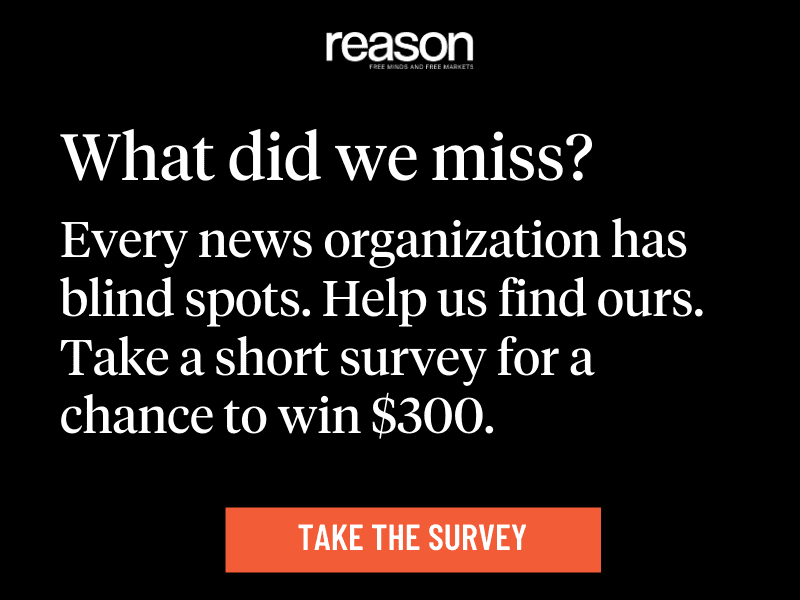By Eugene Volokh
Copyright reason

I’m serializing my forthcoming Emory Law Journal article titled Addiction to Constitutionally Protected Activity: Speech, Press, and Religion. In my earlier posts, I argued that concerns about psychological addiction can’t justify restrictions that interfere with behavior presumptively protected by the Free Exercise Clause. If I am correct, this suggests that they likewise can’t justify restrictions with behavior presumptively protected by the Free Speech or Press Clause, which includes most aspects of social media and video game interface design.
As the Court held, “what is good for First Amendment rights of speech”—in the sense of what would justify restricting free speech rights—”must be good for First Amendment rights of religion as well.”[62] And, conversely, the Court concluded, if a restriction on religious behavior can’t be justified by a desire to protect people, a similar restriction on speech generally can’t be, either.[63]
But beyond this, I think most of the arguments against allowing regulations aimed at preventing “addiction to religion” also apply largely equally to regulations aimed at preventing addiction to other First Amendment activities, such as to viewing material on social media or to playing video games. Here, I will discuss how this applies to adults; in later posts, I’ll discuss, among other things, how it applies to children.
Addiction in traditional media and new
Certain features of social media or video games may be harmful for some people, and may be psychologically difficult for them to abandon despite that harm. But they are also enjoyable for other people, indeed probably for most consumers of such expression. And because those features are protected by the First Amendment, it must take a lot—more than just general assertions of supposed addiction and dopamine hits—to justify restricting people’s access to those features, whether through legislation, regulation, or the threat of tort liability.
Consider, for instance, some of the supposedly “addictive features” that have formed the basis for regulating, or litigating against, social media platforms and video games:
“infinite scrolling,” defined as “content that loads as the user scrolls down the page without the need to open a separate page” or “the use of pages with no visible or apparent end or page breaks”;[64]
“[p]ush notifications or alerts sent by the online forum, website, or application to inform a user about specific activities or events related to the user’s account”;[65]
“[d]isplay[ of] personal interactive metrics that indicate the number of times other users have clicked a button to indicate their reaction to content or have shared or reposted the content”;[66]
“video that begins to play without the user first clicking on the video or on a play button for that video”;[67]
“live-streaming or a function that allows a user or advertiser to broadcast live video content in real-time”;[68]
“‘badges,’ ‘streaks,’ ‘trophies,’ and ’emojis’ given to frequent users, thereby fueling engagement”;[69]
“variety, social aspects, and numerous characters, skins, and other content” of the characters available in a video game.[70]
[1.] All of these are features that are likely to be enjoyable and valuable to many users. Metrics indicating others’ reactions can provide helpful feedback about what is popular and therefore likely to be interesting: That’s why, for instance, many people look at “wisdom of crowds” ratings such as for restaurants on Yelp and TripAdvisor, for movies on Rotten Tomatoes and Netflix, and more.
Live-streaming provides content that millions of people enjoy. Push notifications can provide useful information to users about new posts that they like. (There is generally a feature to turn off such notification, and if there weren’t such a feature and users were annoyed by the notifications, then many users would switch to other platforms.) People who genuinely enjoy social media content might like seeing more of it, until they choose to stop scrolling.
There may be a few exceptions, chiefly involving absence of choice for users: For instance, a social media platform’s failure to “provid[e] options to users to self-restrict time used on a platform” or “[m]aking it challenging for users to choose to delete their account”[71] may well be of little positive value to users. But those are indeed rare exceptions.
Likewise, the supposedly addictive video game features are also major elements of the interaction between the user and the game. The “variety, social aspects, and numerous characters, skins, and other content” of the characters available in a video game are obviously features that many gamers prize: They may let gamers express their own personalities, they may fit the game’s storyline, or they may just look cool. (You know, fun.)
Video games are a highly competitive business. If the elements weren’t genuinely appealing to many players, the players would turn to other video games.[72] That’s especially so because new games are constantly arriving, and trying to pull players away from the old games.
[2.] The features are all elements of the design of a speech product—or, if you prefer, press product[73]—and thus presumptively protected by the First Amendment. Some features are themselves expressive: As one court held, for instance, with regard to the video game features mentioned above, they “are properly considered video game content; they are elements and features of video games. Requiring the Developer Defendants to remove these allegedly addictive features would force them to change the content of the games to make them less enticing or enjoyable for users.”[74]
Other features may not themselves be expressive: For instance, the presence of infinite scroll doesn’t itself generally convey a message from the social media platform.[75] But the First Amendment protects decisions about where, when, and how to speak or publish, even when those particular decisions don’t themselves communicate anything but are instead tools for communicating other material.
A magazine, for instance, may decide to have a thick monthly issue rather than a thinner weekly, or vice versa. Indeed, one facet of the freedom of the press has always involved judgments about how to organize, format, and distribute material—including aggregations of material written by others—in a way that makes the material as accessible and engaging as possible to readers (and thus makes the publisher more money). A producer may decide to present a visual story as one long program (a movie) or as a set of short episodes (a miniseries). If the story is presented as a miniseries, the producer may decide whether to release all the episodes at once, or once a week.
Likewise, a speaker may decide to use sound amplification, to reach a larger group of listeners.[76] Speakers may decide to spread their message through in-person door-to-door canvassing rather than on billboards or mass mailings.[77] Leafletters might choose to leaflet in an airport rather than in some other place.[78] A newspaper publisher may decide to sell newspapers rather than distributing them for free and relying entirely on advertising for revenue.[79]
None of these decisions necessarily expresses anything itself. They are just means for better reaching an audience, or better presenting the message to the audience. Yet they are still presumptively protected by the First Amendment.[80]
To be sure, the expressive value that people receive as a result of some such delivery decisions—again, consider infinite scroll or auto-play—might seem modest. But it does exist; and of course the Free Speech and Free Press Clauses protect even relatively trivial speech and not just great ideas. Likewise, generally the Clauses protect choices such as how much material to give readers, and not just choices of what viewpoint to express.
And the possible tendency of regulations (or the threat of litigation) to prevent harm through elimination of the “addictive” features seems correspondingly modest. Take, for instance, infinite scroll. True, relatively little is lost to readers if they have to click on “read more” after, say, ten pages’ worth rather than having more material be loaded automatically as they scroll.
But I expect relatively little “addiction” is prevented by such a requirement as well. Someone who is addicted (or remains addicted) as a result of infinite scroll would likely act much the same way as a result of click-every-ten-pages-to-get-more scroll. And if social media platforms have to do more than just add a “read more” tag, then the burden on unaddicted, fully willing readers will be correspondingly greater as well.
[3.] As with religion, people often value speech and press products differently than others do. Consider, for instance, Judge Gould’s partial dissent in Gonzalez v. Google LLC, quoting and endorsing historian Anne Applebaum:
[S]ocial media algorithms themselves encourage false perceptions of the world. People click on the news they want to hear; Facebook, YouTube, and Google then show them more of whatever it is that they already favor, whether it is a certain brand of soap or a particular form of politics. The algorithms radicalize those who use them too. If you click on perfectly legitimate anti-immigration YouTube sites, for example, these can lead you quickly, in just a few more clicks, to white nationalist sites and then to violent xenophobic sites. Because they have been designed to keep you online, the algorithms also favor emotions, especially anger and fear.
And because the sites are addictive, they affect people in ways they don’t expect. Anger becomes a habit. Divisiveness becomes normal. Even if social media is not yet the primary news source for all Americans, it already helps shape how politicians and journalists interpret the world and portray it. Polarization has moved from the online world into reality.[81]
Whether or not this analysis is factually correct, I think it isn’t an adequate basis under the First Amendment to restrict speech.
Judge Gould, Anne Applebaum, and many others may conclude that it’s bad for people to become more “radical[],” “ang[ry],” “fear[ful],” or “[d]ivi[ded].” Likewise, Kyle Langvardt writes that “the addiction-driven nature of social media probably harms the quality of public discourse and deliberation,” partly because “developers’ efforts to drive constant user engagement encourage an emotional, hair-trigger style of public expression.”[82] He also argues “that the most reliable engagement drivers” on the addictive social media platforms “are messages that stimulate feelings of outrage and group identification,”[83] and suggests that their algorithms can “help[] users ‘activate’ authoritarian tendencies that might otherwise have lain dormant.”[84]
But others—both writers and readers—disagree: They may think there is much to be radical and angry about, much to fear, and much reason for division. They may think that certain conditions, events, or actions are so outrageous that people should be more emotional about them. And they may think that group identification (at least among members of their own groups) is critical to achieving justice.
The First Amendment protects such views as much as it protects their opposites. It protects radical and radicalizing and group-identification-focused speech, including “white nationalist sites” and “violent xenophobic sites,” as well as comparably radical left-wing sites.[85] It protects speech that “induces a condition of unrest, creates dissatisfaction with conditions as they are, or even stirs people to anger.”[86] It protects speech that seeks to sow fear and divide, as much as it protects speech that seeks to reassure or unite. It protects speech that seeks to create visceral emotional reactions as well as speech that promotes rational deliberation.[87] (Indeed, returning to the religion example, the First Amendment protects religions that use recruitment and maintenance tools that one can view as “addictive” even when those religions “stimulate feelings of outrage and group identification” as well as “anger,” “fear[],” and “[d]ivisiveness.”)
Platforms or algorithms that select speech generally cannot be restricted based on the worry that they will end up promoting such viewpoints.[88] And users who may genuinely want more radical, angry, fear-inducing, and divisive material shouldn’t have their freedom restricted to prevent others from becoming supposedly addicted to the platforms and therefore more open to such material.
This extends to apolitical design features as well. Perhaps some people are harmed by some psychological addiction to social media. Perhaps they lose sleep,[89] or lose time with in-real-life friends.[90] Perhaps a few even commit crime as a result,[91] though the causal connection is likely hard to establish.
At the same time, others may value the very things that are also in some measure harmful. Who among us has never stayed up later than we should have reading an especially engaging book? Perhaps our mothers might have told us to get our sleep instead, but we valued matters differently. Likewise, some people may value the emotional reward of viewing social media—or playing video games—more than others.
And the “addictive” features often get players “hooked” just because they increase the emotional reward to the user, and the emotional connection the user gets from them. In the words of another recent case, “Plaintiffs label Roblox ‘addictive,’ but this just seems like another way of saying that Roblox’s interactive features make it engaging and effective at drawing players into its world, and First Amendment protections do not disappear simply because expression is impactful.”[92] When it comes to First-Amendment-protected communications, the choice to risk getting more involved than is supposedly “good for us” is generally a choice that we are entitled to make free of government constraint. And I think that’s true even as to constraint aimed at trying to protect the choices of the addiction-prone.
[4.] Again as with religion, there might be some communications that are so harmful, or some means of influencing people that are so improper, that they might be restricted. If, for instance, there really was evidence that some social media practices, or some kinds of video games, drive considerable numbers of people to murder, perhaps that might be a basis for restricting them.[93] Likewise, if some visuals routinely trigger physically harmful reactions in viewers—much as strobe lights can cause seizures in people with certain kinds of epilepsy—perhaps that might be a basis for restricting those visuals.[94]
But surely the mere tendency of speech to get readers to want more such speech can’t suffice, even if that tendency is deliberately produced by the authors, and mediated by the physical release of some neurotransmitters in viewers’ brains. Deliberate manipulation of listeners, aimed at keeping them engaged and likely to pay the speaker, is likely as old as the first songs or epic poems. Deliberate manipulation of readers is likely as old as the novel.
Authors of serialized fiction (print or visual) may use cliffhangers to keep people coming back to the next episode.[95] Authors may create stories that deliberately draw people in because of their desire to escape their humdrum reality. Or they may instead create stories that draw other readers in to feel anger or aggression about their grievances (even potentially dangerous tribalist grievances), emotions mediated through the release of neurotransmitters.[96]
Likewise, authors deliberately create emotional bonds between the reader and the authors’ entirely fictional characters. A few readers or viewers may even suffer from excessive emotional connection to such characters.[97] It is a strange feature of human psychology that we get sad and sometimes even cry when we see—or even just read about—the death of characters that we know for a fact didn’t actually die, because we know they never existed. Authors routinely exploit this irrationality, which again is mediated (as sadness and tears often are) through the release of neurotransmitters.[98]
Indeed, it is usually seen as professional inadequacy for novelists and screenwriters to fail to exploit our irrational ability to emotionally connect with nonexistent people. And authors who do exploit this irrational ability often deliberately do so to cause readers to turn over more money—oh, such shameful lying manipulators!—to buy the sequel or the next episode.
Now relatively few people get upset at J.K. Rowling addicting people to Harry Potter, or Gene Rodenberry addicting people to Star Trek. My sense is that most people view reading as generally good for people (and especially children), and view cult TV shows as harmless entertainment.
Yet the First Amendment makes it hard for the law to distinguish some First Amendment protected activity, such as reading, from other such activity, such as video games or social media.[99] Even if one tries to set aside video games as mere entertainment, mere entertainment is of course fully constitutionally protected.[100] And much of the material on social media consists of political advocacy—indeed, many of the complaints about social media are precisely about its promoting the wrong sorts of political advocacy.[101] Restricting such First Amendment activity, whether political or merely entertaining, would likely require a showing of substantially more tangible, demonstrable harm than mere alleged “addiction.”
[62] Brown v. Ent. Merchants Ass’n, 564 U.S. 786, 795 n.3 (2011).
[64] Fla. Stat. § 501.1736.
[68] Id.; see also Computer & Commc’ns Indus. Ass’n v. Uthmeier, No. 4:24CV438-MW/MAF, 2025 WL 1570007 (N.D. Fla. June 3, 2025).
[69] Patterson v. Meta Platforms, Inc., No. 24-00513, 2025 WL 2092260 (N.Y. App. Div. July 25, 2025).
[70] Angelilli v. Activision Blizzard, Inc., No. 23-CV-16566, 2025 WL 1184247, *6 (N.D. Ill. Apr. 23, 2025).
[71] See In re Soc. Media Adolescent Addiction/Pers. Inj. Prods. Liab. Litig., 702 F. Supp. 3d 809, 836 (N.D. Cal. 2023) (“Providing users with tools to limit the amount of time they spend on a platform does not alter what the platform is able to publish for those that choose to visit it.”).
[72] It’s theoretically possible that a gameplay element is only appealing to players who are addicted, and thus isn’t “genuinely” appealing. But I’ve seen no reason to believe that this is so as to any of these elements. And it’s contrary to my sense of how the great bulk of game players, who aren’t addicted and who often do stop playing a game—whether because they’re tired of it, because they grow annoyed with some of the features, or because a newer, more interesting game arrive—behave.
[73] A social media platform is in many ways like a magazine or newspaper, publishing material from many different authors.
[74] Courtright v. Epic Games, Inc., No. 2:24-CV-04055-BCW, 2025 WL 2319148, *7 (W.D. Mo. Aug. 11, 2025)
[75] One might hypothesize some such message, such as “These stories are so interesting that you should keep reading and reading them,” but realistically few people are likely to perceive such a message.
[76] See Ward v. Rock Against Racim, 491 U.S. 781, 791 (1989) (treating volume restriction on music as a speech restriction, though one that may be content-neutral and therefore judged under intermediate scrutiny).
[77] See Watchtower Bible & Tract Soc’y of New York, Inc. v. Vill. of Stratton, 536 U.S. 150 (2002) (striking down a restriction on such canvassing); Martin v. City of Struthers, 319 U.S. 141 (1943) (likewise).
[78] See Int’l Soc’y for Krishna Consciousness, Inc. v. Lee, 505 U.S. 672, 685 (1992) (O’Connor, J., concurring) (holding that a restriction on leafletting in an airport is unconstitutional).
[79] See City of Lakewood v. Plain Dealer Pub. Co., 486 U.S. 750, 756 n.5 (1988) (4–3) (“the degree of First Amendment protection is not diminished merely because the newspaper or speech is sold rather than given away”); N.Y. Times Co. v. Sullivan, 376 U.S. 254, 266 (1964) (whether newspapers are sold is “immaterial” to the First Amendment protection they received).
[80] I set aside here regulations on elements of chance that may earn a game player money or resources that could otherwise be bought or sold for money. Langvardt, supra note 10, at 131-–32. Such games of chance have long been regulated as gambling, because the transfer of money—as opposed to the interactive verbal and visual game play features that accompany it—is more than just expression (at least when it goes beyond the transfer of money to buy expression, which of course is constitutionally protected, see cases cited supra note 79). See, e.g., Hest Techs., Inc. v. State ex rel. Perdue, 366 N.C. 289, 300–01 (2012); There to Care, Inc. v. Comm’r of Indiana Dep’t of Revenue, 19 F.3d 1165, 1167 (7th Cir. 1994); Gift Surplus, LLC v. N.C. ex rel. Cooper, 605 F. Supp. 3d 711, 727–28 (M.D.N.C. 2022) (collecting cases). But many of the claims that video game features are regulable to prevent addiction (and pretty much all the as to social media features) aren’t limited to such gambling features.
[81] Gonzalez v. Google LLC, 2 F.4th 871, 920 n.3 (9th Cir. 2021) (Gould, J., concurring in part and dissenting in part) (paragraph break added), rev’d sub nom. Twitter, Inc. v. Taamneh, 598 U.S. 471 (2023); see also Langvardt, supra note 10, at 149 (“Many recommendation algorithms—YouTube’s most prominently—have been shown repeatedly to send users along a ‘radicalizing’ path. These platforms in essence have devised a guided daydream that monetizes our weaknesses for tribalism and negative rumination.”).
[82] Langvardt, supra note 10, at 133.
[83] Id. at 149.
[84] Id. at 150.
[85] See, e.g., Brandenburg v. Ohio, 395 U.S. 444 (1969); Forsyth County v. Nationalist Movement, 505 U.S. 123 (1992); Healy v. James, 408 U.S. 169 (1972); Communist Party of Ind. v. Whitcomb, 414 U.S. 441 (1974); Brown v. Socialist Workers ’74 Campaign Comm., 459 U.S. 87 (1982).
[86] Terminiello v. City of Chicago, 337 U.S. 1, 4 (1949).
[87] Cohen v. California, 403 U.S. 15, 26 (1971); see also, e.g., Texas v. Johnson, 491 U.S. 397, 414 (1989).
[88] Cf. Patterson v. Meta Platforms, Inc., No. 24-00513, 2025 WL 2092260 (N.Y. App. Div. July 25, 2025).
[89] See State ex rel. Jackson v. TikTok Inc., No. 24CV032063-910, 2025 WL 2399525, ¶ 36 (N.C. Super. Aug. 19, 2025) (“TikTok addiction allegedly disrupts healthy sleep habits and social interactions, causing insidious psychological harms to teens and children.”).
[91] Cf. Patterson, 2025 WL 2092260, at *8 (Bannister, J., dissenting) (“‘[W]hy do I always have trouble putting my phone down at night? . . . It’s 2 in the morning . . . I should be sleeping . . . I’m a literal addict to my phone[.] I can’t stop cons[u]ming.’ These are the words of a teenager who, on May 14, 2022, drove more than 200 miles to Buffalo to shoot and kill 10 people and injure three more at a grocery store in the heart of a predominantly Black community.”).
[92] Angelilli, 2025 WL 1184247, at *5.
[93] Cf. Brown v. Entm’t Merchants Ass’n, 564 U.S. 786, 799–800 (2011) (leaving room for the possibility that, if violent video games are actually proved to materially increase violence among their players, they might be restrictable).
[94] See Mark A. Lemley & Eugene Volokh, Law, Virtual Reality, and Augmented Reality, 166 U. Pa. L. Rev. 1051, 1081–82 (2018); Eichenwald v. Rivello, 318 F. Supp. 3d 766 (D. Md. 2018) (discussing possible battery liability when someone deliberately sends a message containing strobe effects to someone who he knows is susceptible to physical harm from such effects). I’m unaware of any laws that generally try to restrict such features in visual media, or any cases imposing liability based on such features in the absence of deliberate targeting.
[95] A Thousand and One Nights, collected from the 8th to the 15th centuries A.D., is framed as the narrator avoiding being killed by telling the Sultan a story every evening, “but leav[ing] it incomplete—promising to tell him the end on the following day.” Thousand and One Nights, History World, https://www.historyworld.net/history/thousandAndOneNights/148 (last visited Sept. 8, 2025).
[96] See, e.g., Simeng Gu et al., Neuromodulator and Emotion Biomarker for Stress Induced Mental Disorders, 2016 Neural Plast. 1 (2016); Allan Siegel et al., The Neurobiological Bases for Development of Pharmacological Treatments of Aggressive Disorders, 5 Current Neuropharmacology 135, 138 (2007).
[97] See, e.g., Michelle Möri, Farewell on Screen: Uncertainty in Parasocial Relationships and Breakups with Fictional Media Characters, 103 Poetics, no. 101874 (2024).
[98] Cf. Lauren M. Bylsma, Asmir Gračanin & Ad J.J.M. Vingerhoets, The Neurobiology of Human Crying, 29 Clin. Auton. Res. 63 (2019).
[99] To quote Brown, 564 U.S. at 796 n.4 (cleaned up):
Justice Alito accuses us of pronouncing that playing violent video games “is not different in ‘kind'” from reading violent literature. Well of course it is different in kind, but not in a way that causes the provision and viewing of violent video games, unlike the provision and reading of books, not to be expressive activity and hence not to enjoy First Amendment protection. Reading Dante is unquestionably more cultured and intellectually edifying than playing Mortal Kombat. But these cultural and intellectual differences are not constitutional ones. Crudely violent video games, tawdry TV shows, and cheap novels and magazines are no less forms of speech than The Divine Comedy,
[100] See Winters v. New York, 333 U.S. 507, 510 (1948); Brown v. Entm’t Merchants Ass’n, 564 U.S. 786, 790 (2011).
[101] See, e.g., Patterson v. Meta Platforms, Inc., No. 24-00513, 2025 WL 2092260 (N.Y. App. Div. July 25, 2025).



